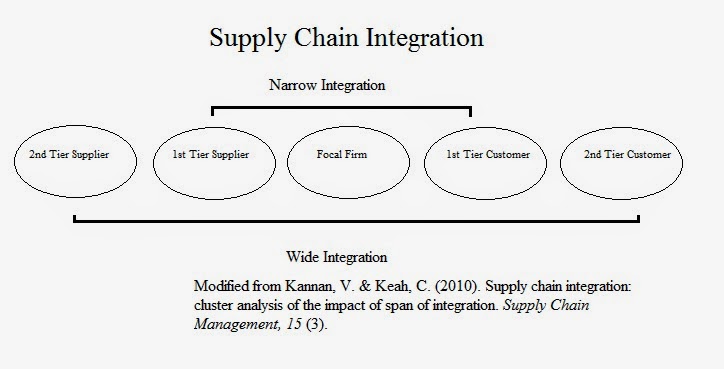Supply chain management and integration has important
functions for businesses that desire to create higher levels of financial performance.
Since all companies work with related companies in either formal or informal
linkages, such as suppliers and distributors, it is important to ensure
information is transferred effectively between entities to enhance operations
on both sides. Research by Kannan & Keah (2010) show how companies that
integrate their supply chains to a wider extent develop a number of advantages.
Supply chain management entails businesses
associated with the development, building, distributing, and returning of products/services.
It has been defined as the “cross
functional integration within the firm and across the network of firms that
comprise the supply chain”
(Lambert, 2004). The management of supply chain has come to mean better
integration with the supply chain elements to produce value.
Integration is the creation of inter-firm linkages.
Sharing information, building stronger ways to coordinate resources and
collaborating on mutual goals creates efficiencies. These efficiencies may lead
to cheaper processes, faster movement of products, or better attainment of
resources. The functioning of the supply chain has a direct effect on the
success of the organization.
There are reasons why some firms seek narrow
integration versus wider integration. The factors leading to higher levels of
performance can be difficult to understand and master. Significant research,
resources and time are invested into the supply chain to create higher levels
of efficiencies. Being too wide in orientation can lead to lack of focus and
goal confusion.
The researchers found that by moving beyond first
tear suppliers offered significant savings and performance improvements that
result in faster product development times, higher sales and strengthened
quality. The second tier suppliers have a significant impact on how the whole
system functions as an entity. Those companies that fail to consider
information from second tier suppliers have a lack of context in which to
understand supply chain information putting them at a disadvantage.
Kannan, V. & Keah, C. (2010). Supply chain
integration: cluster analysis of the impact of span of integration. Supply Chain Management, 15 (3).
Lambert, D. (2004), Supply Chain Management: Processes, Partnerships,
Performance. Supply Chain Management Institute, Sarasota, FL.

No comments:
Post a Comment